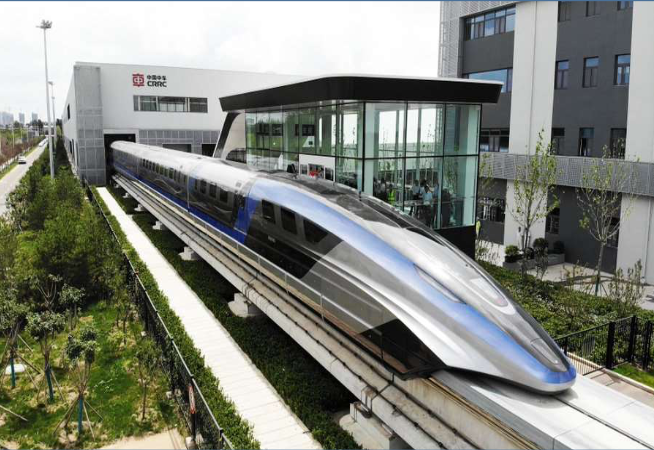Delhi, Jul 22: Magnetic levitation, or maglev, is a transport technology in which powerful magnets ensure that the train or the vehicle levitates above the tracks. This lack of physical contact between the train and the tracks reduces friction and allows trains to move at very high speeds. This technology is also the basis of the hyperloop – a pod based transportation system. Just like a train has coaches, a hyperloop will have pods. Each pod can seat 28 passengers, and a network of pods will be used as a transport system.
Even though the technology has been researched since 1969 by German researchers, the only line actually working on the maglev technology is a short line in Shanghai. That project was executed by German engineering firms in collaboration with Chinese manufacturing companies. On July 20th, China unveiled a train that is based on this technology. According to Xinhua, the Chinese government’s news agency, this train has been built in China.
The Chinese press release also mentioned that the train has been running well on the test track in the production facility. However, no test run was conducted during the unveiling. The press release mentions that this train is capable of traveling at 600 kmph. China has the world’s largest high-speed train network. The current top speed of a Chinese train is about 350 kmph.
Other countries
Japan is all set to inaugurate its own maglev track between Tokyo and Nagoya by 2027. The current world record for the fastest train is held by the Japanese maglev train. This train reached a top speed of 603 kmph on a test track in 2016.
Germany, the country that originally worked on the technology, has not converted its own mass transit system (a system that is used for travel by many people) to maglev.
The US is considering using maglev trains in some parts of its vast railway network.


